Bull Durham
At the end of the 19th century, the Duke family decided to diversify its tobacco holdings and began to invest in other business ventures. One of their first investments was the Erwin Cotton Mill No. 1 in West Durham (partly because it needed mechanical looms to make matching cotton bags for its new cigarette-making machines).
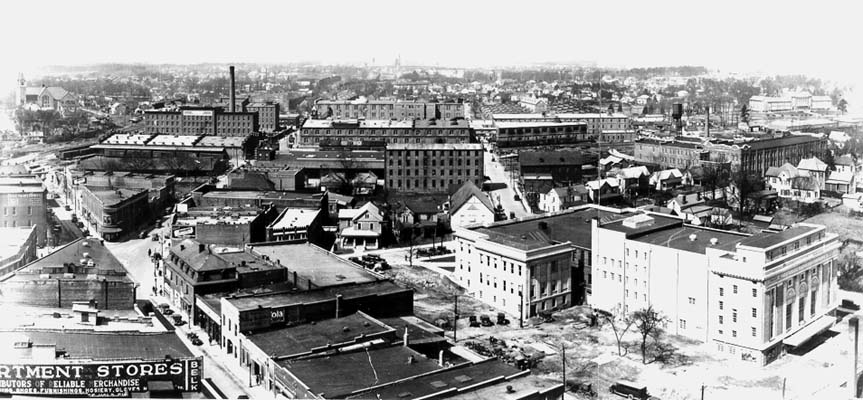
View of Five Points and Brightleaf Manufacturing District (ca. 1920): Looking west down Chapel Hill Street, West Main Street, and Morgan Street. Duke Memorial Methodist Church is on the left, Liggett & Myers Tobacco Factory is in the middle, and what is now the Durham Arts Council and the Carolina Theatre are lower right. On the distant horizon is the Erwin Cotton Mill.
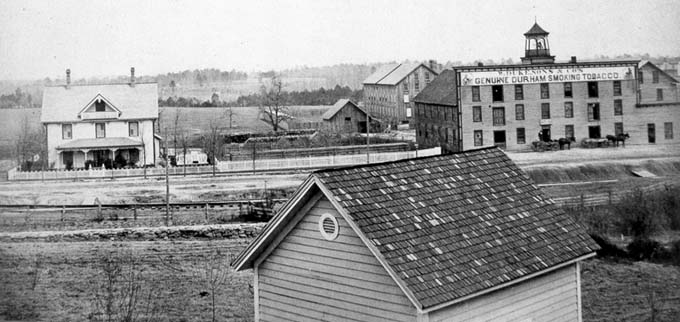
View of the first Duke factory in Durham (ca. 1883): shows factory and warehouse buildings, Duke house, cleared countryside, and RR tracks passing in front of the factory (near present-day West Main and North Duke).
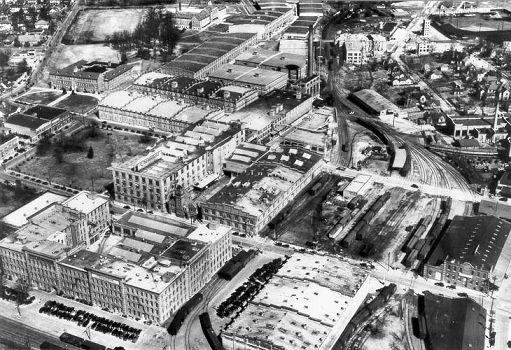
L&M tobacco factory and warehouses (ca. 1930). Old Durham Athletic Park is upper-right with Carr Jr. High and Durham High School at upper-left. Small dark brick building with tower in middle is the old fire house No. 2 (which moved from West Main to Ninth Street in 1950).
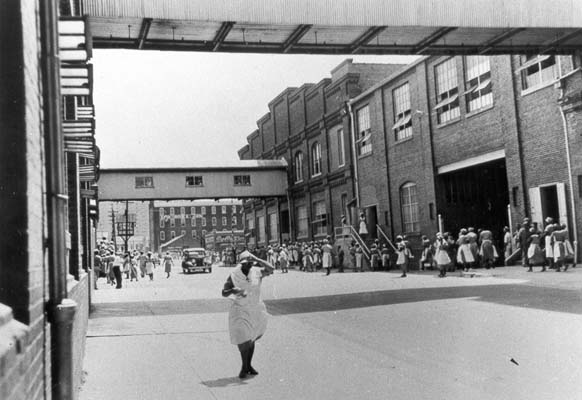
Liggett & Myers tobacco factory (ca. 1930): Factory workers, all women in uniform aprons, emerge onto Morgan Street during shift change on Main Street (downtown in background).
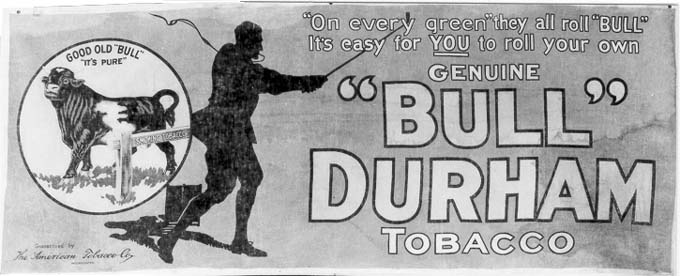
Bull Durham Tobacco Ad (ca. 1920): Large poster shows ease of rolling your own Bull Durham cigarettes by picturing a golfer swinging club while smoking.
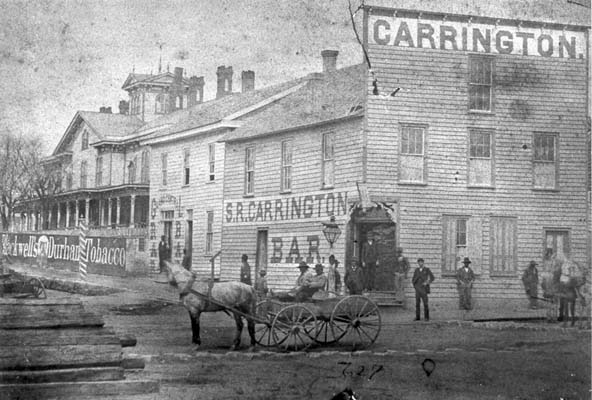
Carrington's Bar and Hotel stood (ca. 1880). Grand Central Barber was located behind hotel and fence was painted with Blackwell's Durham Tobacco ad.
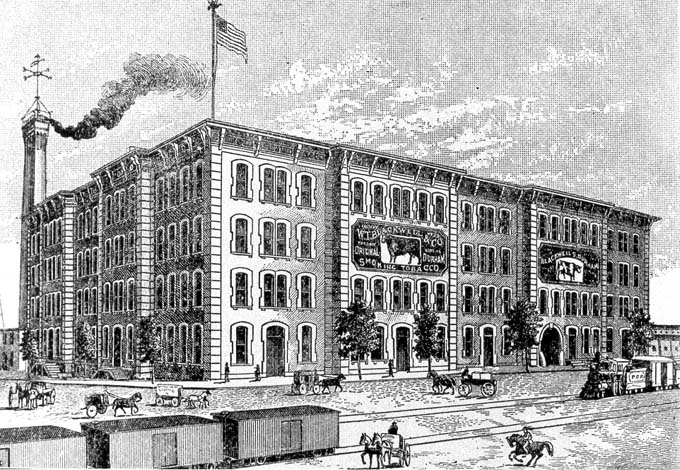
Blackwell's Durham Tobacco Company in 1895: Factory building with bull trademark. Today's renovation plans for the American Tobacco Campus include converting the old Blackwell building into a hotel.
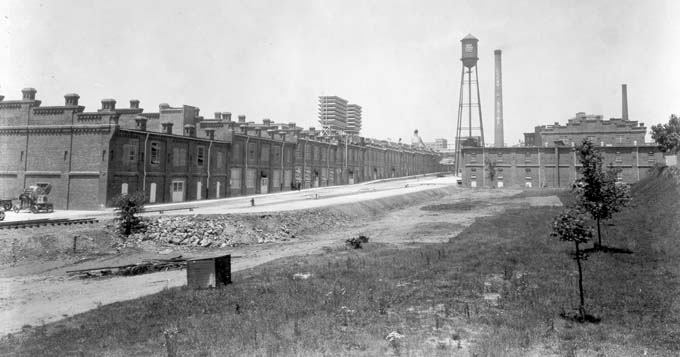
American Tobacco Campus in 1930 (the new Durham Bulls Athletic Park stands just to the right of these buildings). Old brick warehouses and Lucky Strike smokestack still stand today.

Blackwell Tobacco Company (ca. 1870)
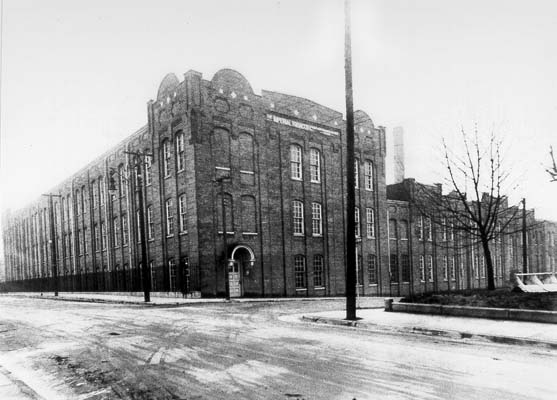
Not to be outdone by young American upstarts, TH Lawrence built the Imperial Tobacco of Great Britain & Ireland warehouse at 215 Morris Street (ca. 1920).
Photographs courtesy of the Durham County Library's North Carolina Collection
